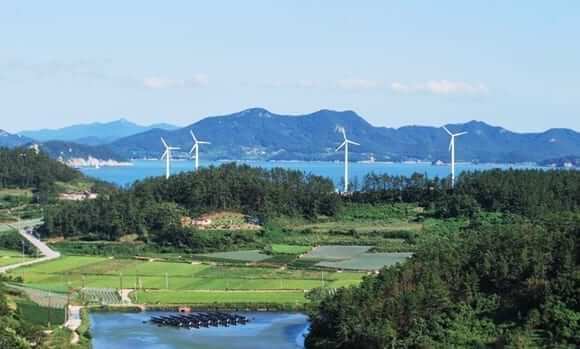Made-in-USA: Northern Power Systems exporting wind products to Asia

Turbine manufacturer Northern Power Systems, already a great U.S. export story, has officially entered a new market, and it’s one it says is poised for growth.
The company has commissioned four of its direct-drive NPS 100 (100 kilowatt) wind turbines on an island in South Korea as part of a multi-technology project designed to meet the unique needs of a self-contained island grid. In the process, Northern Power Systems worked closely with a key player with whom the company hopes to continue ties: national grid operator Korean Electric Power Corp.
Currently, the top markets for Northern Power Systems, which ships turbines from its Barre, Vt., factory, are Italy and the United Kingdom, both of which have strong policy incentives for distributed wind. Asia, therefore, represents a new market. Regarding the South Korea deployment, Chris McKay, Director of Product Management, told Wind Energy Weekly “This is a real first, true commercial initiative, and we think it can lead to many more projects of this type” in Asia.
What makes South Korea an appropriate market for the product? Hundreds of islands on which people live, said McKay. Distributed generation and self-contained grids are a way of life in these locations. McKay likens the Korean-island market to that of another popular destination for NPS turbines: isolated Alaskan villages.
Asian market potential extends well beyond Korea for the made-in-U.S.A. product, said McKay. The Philippines, Malaysia, and other parts of Asia are just some of the places “where we see a lot of opportunity,” he said. In the U.S., many state-level policy incentives for distributed wind have expired or are no longer on the books, although McKay said there have been some signs that the home market could grow more favorable.
Meantime, as is the case with wind energy technology collectively, the company’s NPS 100 keeps getting better. Released this year was the third-generation C series, which boasts an impressive 15 percent increase in energy production over the most recent iterations within the earlier B series platform that was deployed in Korea. (The company is gradually transitioning from the B to C series.) The C series includes a bigger rotor, more efficient blades, and other features that provide the ability to tap more energy with less wind resource.


